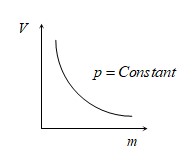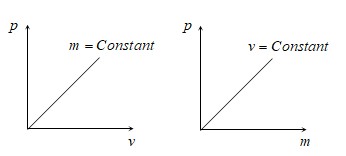Linear Momentum
The linear momentum of a particle of mass m moving with a velocity v is defined to be the product of the mass and velocity. It is a vector quantity. It is mathematically.
\(Momentum\left( p \right)=Mass\left( m \right)\times Velocity\left( v \right)\),
1) Linear momentum of a body is the quantity of motion contained in the body.
2) It is measured in terms of the force required to stop the body in unit time.
3) It is a vector quantity and its direction is the same as the direction of velocity of the body.
4) Units: kg.m/sec in S.I units; Dimensions: \(\left[ ML{{T}^{-1}} \right]\)
6) If two objects of different masses have same momentum, the lighter body possesses greater velocity.

\(p={{m}_{1}}{{v}_{1}}={{m}_{2}}{{v}_{2}}=Constant\),
\(\therefore \,\,\frac{{{v}_{1}}}{{{v}_{2}}}=\frac{{{m}_{2}}}{{{m}_{1}}}\) \(\Rightarrow \,v\,\,\propto \,\,\frac{1}{m}\) (As \(p\) is constant)
7) For a given body, \(p\propto v\)
8) For different bodies moving with same velocities, \(p\propto m\)

